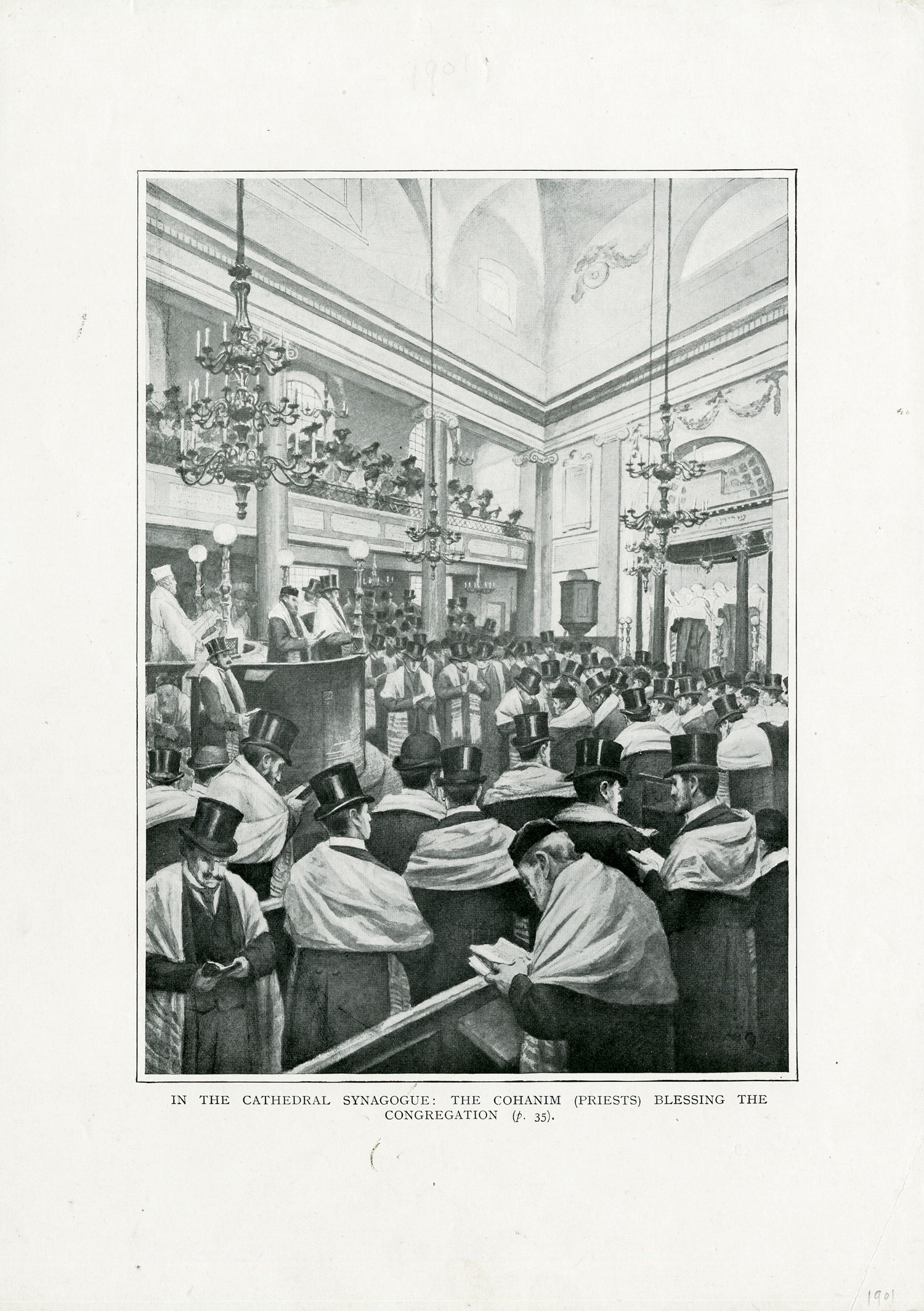This 1901 illustration of the Great Synagogue in London at Duke’s Place shows the congregation’s third building on the site, erected in 1790. Plainly evident is the women’s gallery, which traditionally took the form of a balcony, with women seated behind a wooden grille and men occupying the main floor. The divided arrangement was a common one, shared also by the Bevis Marks Synagogue of London’s Sephardi community.
The print demonstrates that while women were segregated in the Great Synagogue, they were not entirely hidden from view, in contrast to other Jewish houses of worship where the grilles stretched from floor to ceiling. Despite the railing, women worshippers had unobstructed views of the service above the grilles and were not completely walled off. They were quite removed from the rabbi, which would make hearing his sermon more difficult.
Though separated in the service, men and women patrons had a more equal role in the construction of the synagogue buildings that served this congregation. The first synagogue at Duke’s Place, built in 1722, was funded solely by Moses Hart (1675–1756), a wealthy merchant. When the structure pictured here was erected in 1790, Hart’s daughter Judith Hart Levy (1707–1803) was the principle donor. She was acknowledged in the order of service at the synagogue’s consecration with these lines: “With munificent hands hath the right noble and virtuous lady bestowed a princely sum to exalt and beautify the house of God. In the gate will we rehearse her praise, in whose mind her father’s noble deeds are imprinted.”
